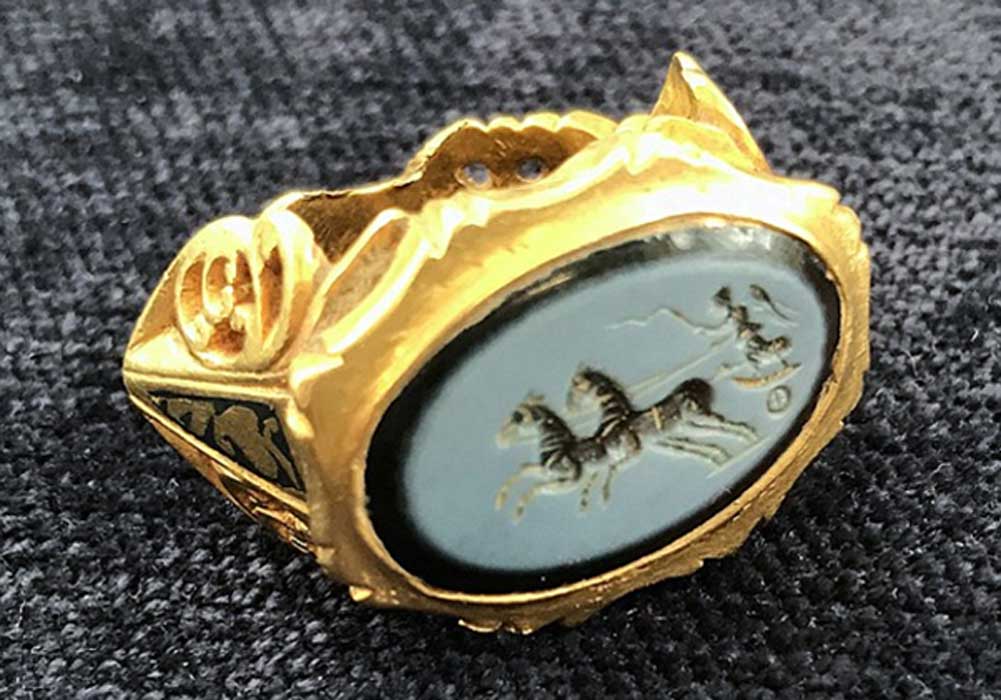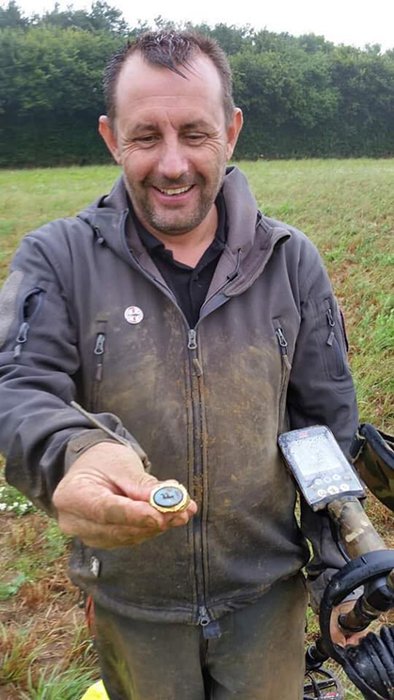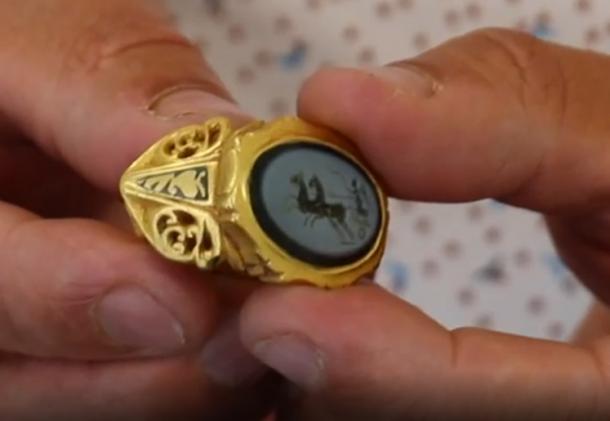A 1,800-year-old Roman signet ring engraved with the goddess of Victory Found in a field in Somerset.
An amateur treasure hunter has made a ‘stunning’ find from the Roman era in the south-west of England. With the help of a metal detector, the man discovered a golden ring at a site being investigated by local archaeologists.

The find is being hailed as very important and one of the most significant finds from the Roman-era in the area in recent years. This discovery has kindled a new excitement regarding the importance of the location where it was discovered and illustrates once again the significant role amateur archaeologists play in unearthing the past.
The Roman gold signet ring with an engraving of ancient victory goddess Victoria / Nike has been found by Jason Massey in a field near Crewkerne, BBC News reports.

Massey, who is part of the Detecting for Veterans group, found the Roman gold ring last Sunday after he unearthed some 60 Roman coins.
At first, he thought he had found his first gold coin but the find turned out to be a gold ring weighing 48 grams (1.7 oz).
The Roman ring is described as one of the most substantial archaeological finds in the recent history of England’s Somerset County and is thought to date back to the period between 200 and 300 AD.
The 3rd century AD Ancient Roman gold ring has been discovered in the same spot. Massey and other amateur detectorists stumbled upon a large number of coins and a Roman grave containing coffin lined with lead.
According to Massey, the site in question near Crewkerne, Somerset County, may have once housed a “very high-status Roman villa”.
“There’s a load of figures floating about [for the value of the ring] but we’re interested in the villa, who’s lived there and where they’ve come from and who the person was that wore this ring,” he says.
“There are a couple of gold rings of that sort of date from Somerset but they’re not common. Gold is… an indication that the owner is fairly wealthy,” comments Ciorstaidh Hayward-Trevarthen, finds liaison officer for South West Heritage Trust.

The Ancient Roman grave containing a lead coffin and over 250 coins that Massey and other amateur detectorists found in last year that was dated to ca. 400 AD
A total of six out of some 200 similar Roman lead coffins found in all of the UK have been discovered in the southwestern Somerset County.
In 2016, there were a total of 37 reported cases of treasure found in Somerset in 2016, the largest for five years.
Somerset County is in England’s top 10 local authority areas for treasure, according to official figures from the Department for Culture, Media and Sport. Norfolk County topped the list with 130 discoveries in 2016.





